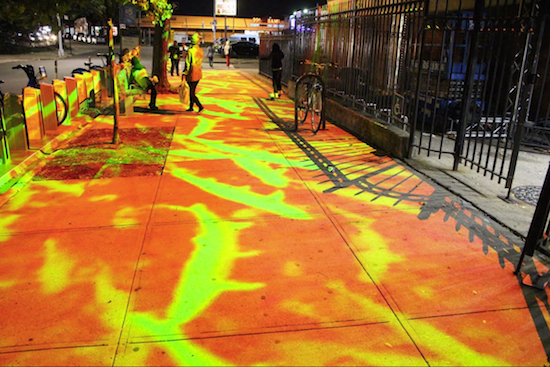Swimming With Fishes: Red Hook art installation commemorates 5th anniversary of Sandy

WATERSHED, a large-scale public art project by artist and third-generation Brooklynite Anita Glesta, transformed the sidewalk outside of the Red Hook library into a virtual ocean to raise awareness about rising sea levels and Red Hook’s vulnerability to natural disasters. Photo by Amy Aronoff for NYFA
Outside the Red Hook Library, residents are accustomed to seeing the usual sights: a Citi Bike station, “No Parking” signs and several trees.
On Thursday and Saturday, however, days before the fifth anniversary of Superstorm Sandy, schools of fish and a few sharks were seen swimming outside the building.
